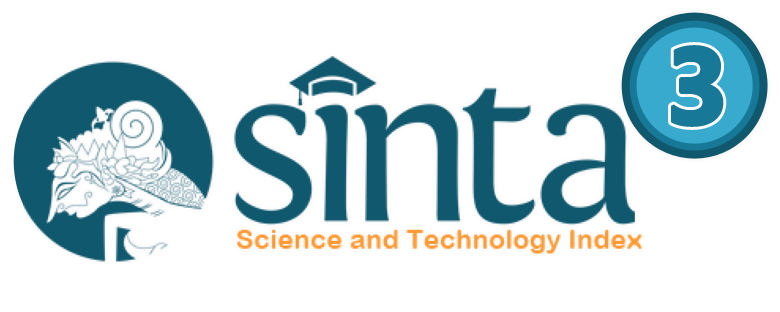Appropriation of Nahdlatul Ulama Higher Education in the Reformation Era
Apropriasi Perguruan Tinggi Nahdlatul Ulama pada Era Reformasi
Abstract
The Reformation era in Indonesia presents a political ecosystem that has an impact on the development of Nahdlatul Ulama Universities (PTNU). The development of PTNU is important to study so that there is a better understanding of the development of education in NU, which has long been known for its religious education model, both in the form of pesantren and madrasah. Specifically, this study aims to map the changes that have occurred in PTNU since the reform era in Indonesia. This study is a qualitative research using data collection including documents, interviews, and observations. This research found that there was an attempt to centralize management with the establishment of the Nahdlatul Ulama Higher Education Institution by the Nahdlatul Ulama Executive Board (PBNU), a significant increase in the number of general study programs, and demographic changes on the PTNU campus so that it became more heterogeneous from a religious background. The conclusion of this research is that the reform era became an era of change in PTNU from the management of educational institutions on a local scale to a national scale, changes in the type of religious universities towards general universities, and changes in campus residents who were originally homogeneous to heterogeneous. The development and changing trends in PTNU are evidence of the appropriation process in PTNU which absorbs external values and is modified so that PTNU can grow and develop in line with the times.
Downloads
References
Adli, Imam Mahasin, Mustofa Kamal, and Puji Dwi Darmoko. “Konsep Pendidikan Dakwah Nu.” Madaniyah 10, no. 2 (2020): 225–50.
Al-Kurdi, Osama, Ramzi El-Haddadeh, and Tillal Eldabi. “Knowledge Sharing in Higher Education Institutions: A Systematic Review.” Journal of Enterprise Information Management, 2018. https://doi.org/10.1108/JEIM-09-2017-0129.
Arif, Muhamad. “REVITALISASI PENDIDIKAN ASWAJA AN NAHDLIYAH (KE-NU-AN) DALAM MENANGKAL FAHAM RADIKALISME DI SMK AL-AZHAR MENGANTI GRESIK.” J-PAI: Jurnal Pendidikan Agama Islam, 2018. https://doi.org/10.18860/jpai.v5i1.6052.
Arifin, Arifin. “Strategi Manajemen Perubahan Dalam Meningkatkan Disiplin Diperguruan Tinggi.” EDUTECH Ilmu Pendidikan Dan Ilmu Sosial 3 No 1, no. 1 (2017): 117–32.
Bourlès, Renaud, Bruno Ventelou, and Maame Esi Woode. “Child Income Appropriations as a Disease-Coping Mechanism: Consequences for the Health-Education Relationship.” Journal of Development Studies, 2018. https://doi.org/10.1080/00220388.2016.1274393.
Chinta, Ravi, Mansureh Kebritchi, and Janelle Ellias. “A Conceptual Framework for Evaluating Higher Education Institutions.” International Journal of Educational Management, 2016. https://doi.org/10.1108/IJEM-09-2015-0120.
Dianita, Gita, Endis Firdaus, and Saepul Anwar. “IMPLEMENTASI PENDIDIKAN TOLERANSI DI SEKOLAH: Sebuah Kearifan Lokal Di Sekolah Nahdlatul Ulama.” TARBAWY : Indonesian Journal of Islamic Education, 2019. https://doi.org/10.17509/t.v5i2.16752.
Fatihah, Imroatul. “PERAN NAHDLATUL ULAMA (NU) DALAM BIDANG PENDIDIKAN KARAKTER.” Al-Tarbawi Al-Haditsah : Jurnal Pendidikan Islam, 2018. https://doi.org/10.24235/tarbawi.v3i2.3116.
Ford, Marcus. “The Functions of Higher Education.” American Journal of Economics and Sociology, 2017. https://doi.org/10.1111/ajes.12187.
Hakam, Saiful. “Menjadi Modern Dan Religius: Perguruan NU Di Blitar 1950an-1970an.” Briliant: Jurnal Riset Dan Konseptual, 2017. https://doi.org/10.28926/briliant.v2i4.119.
Handayani, Titik. “RELEVANSI LULUSAN PERGURUAN TINGGI DI INDONESIA DENGAN KEBUTUHAN TENAGA KERJA DI ERA GLOBAL.” Jurnal Kependudukan Indonesia, 2015. https://doi.org/10.14203/jki.v10i1.57.
Hasan, Muhammad I., Titin W. Murtini, and Suzanna R. Sari. “The Application of Sustainable Architecture in Islamic University.” Advances in Environmental Biology, 2015.
Herodotou, C., N. Winters, and M. Kambouri. “A Motivationally Oriented Approach to Understanding Game Appropriation.” International Journal of Human-Computer Interaction, 2012. https://doi.org/10.1080/10447318.2011.566108.
Indrajaya, Ferdinand. “APROPRIASI DAN REKONTEKSTUALISASI HISTORIS STUDIDASAR RUPA SEBAGAI BAGIAN DARI PENDIDIKAN DASAR DESAIN.” Jurnal Dimensi Seni Rupa Dan Desain, 2017. https://doi.org/10.25105/dim.v14i1.2328.
Kim, Nokyeon, and Sanga Song. “A Qualitative Exploration into Consumers’ Perceptions and Experiences with Cultural Appropriation,” 2021. https://doi.org/10.31274/itaa.11923.
Kromydas, Theocharis. “Rethinking Higher Education and Its Relationship with Social Inequalities: Past Knowledge, Present State and Future Potential.” Palgrave Communications, 2017. https://doi.org/10.1057/s41599-017-0001-8.
Leko, Melinda M., and Mary T. Brownell. “Special Education Preservice Teachers’ Appropriation of Pedagogical Tools for Teaching Reading.” Exceptional Children, 2011. https://doi.org/10.1177/001440291107700205.
Mifsud, Matthieu, Anne Sophie Cases, and Gilles N’Goala. “Service Appropriation: How Do Customers Make the Service Their Own?” Journal of Service Management, 2015. https://doi.org/10.1108/JOSM-04-2015-0136.
Nasrudin, D., I. Helsy, C. Rochman, F. S. Irwansyah, Munir, and Mahmud. “Science Education at Islamic University: Vision and Distinction.” In Journal of Physics: Conference Series, 2019. https://doi.org/10.1088/1742-6596/1280/3/032060.
Rofiq, Muhammad Husnur, and Riza Ahmad Ridwan. “MENANGKAL RADIKALISME MELALUI PENDIDIKAN AGAMA ISLAM BERBASIS ASWAJA NAHDLATUL ULAMA’.” Andragogi : Jurnal Ilmiah Pendidikan Agama Islam, 2019. https://doi.org/10.33474/ja.v1i1.2713.
Rumbley, Laura E., David A. Stanfield, and Ariane de Gayardon. “From Inventory to Insight: Making Sense of the Global Landscape of Higher Education Research, Training, and Publication.” Studies in Higher Education, 2014. https://doi.org/10.1080/03075079.2014.949546.
Sakhiyya, Zulfa, and Elizabeth Rata. “From ‘Priceless’ to ‘Priced’: The Value of Knowledge in Higher Education.” Globalisation, Societies and Education, 2019. https://doi.org/10.1080/14767724.2019.1583089.
Ulum, Ihyaul, and Nadya Novianty. “Analisis Faktor-Faktor Yang Mempengaruhi Pengungkapan Intellectual Capital Pada Official Website Perguruan Tinggi Indonesia.” Jurnal Dan Prosiding SNA - Simposium Nasional Akuntansi, 2012.
Vlieghe, Joris, and Piotr Zamojski. “Towards an Immanent Ontology of Teaching Leonard Bernstein as a Case-Study.” Ethics and Education, 2020. https://doi.org/10.1080/17449642.2019.1700444.
Würfel, Maren. “Transmedia Appropriation and Socialization Processes among German Adolescents.” International Journal of Communication, 2014.
Žalėnienė, Inga, and Paulo Pereira. “Higher Education For Sustainability: A Global Perspective.” Geography and Sustainability, 2021. https://doi.org/10.1016/j.geosus.2021.05.001.

This work is licensed under a Creative Commons Attribution-ShareAlike 4.0 International License.
Pemberitahuan Hak Cipta
Penulis yang menerbitkan bersama Islamic Review: Jurnal Riset dan Kajian Keislaman menyetujui ketentuan berikut:
- Penulis mempertahankan hak cipta dan memberikan jurnal hak publikasi pertama dengan karya yang dilisensikan secara bersamaan di bawah Lisensi Creative Commons Attribution-ShareAlike 4.0 International License (CC BY-SA 4.0) yang memungkinkan orang lain untuk berbagi karya dengan pengakuan kepenulisan karya dan publikasi awal dalam jurnal ini.
- Penulis dapat membuat pengaturan kontrak tambahan yang terpisah untuk distribusi non-eksklusif dari versi jurnal yang diterbitkan dari karya tersebut (misalnya, mempostingnya ke repositori institusi atau menerbitkannya dalam sebuah buku), dengan pengakuan awal publikasi di jurnal ini.
- Penulis diizinkan dan didorong untuk memposting karya mereka secara online (misalnya, di repositori institusional atau di situs web mereka) sebelum dan selama proses pengiriman, karena dapat menghasilkan pertukaran yang produktif, serta kutipan lebih awal dan lebih besar dari karya yang diterbitkan.

Karya ini dilisensikan di bawah Creative Commons Attribution-ShareAlike 4.0 International License.










